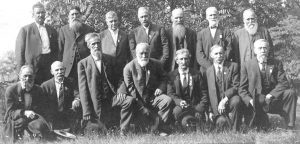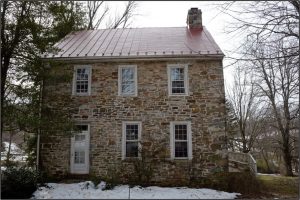The Christmas Carving uses the tragic real-life death of Flemon Anderson on December 24, 1864, as a catalyst for the story. Three years after Flemon’s death, my heroine has returned to Taylorstown to help bring hope and reconciliation to the community she loves, including her former fiancé, Wyatt Hawkins.
As a long-time resident of Loudoun County, Virginia, I’m fascinated with our county’s rich history. I first learned about the tragic events of that Christmas Eve when I attended a presentation given by local author, historian, and playwright, Meredith Bean McMath, Seldom Heard Stories from Loudoun Civil War History. Meredith also pointed me to my primary source for this story, History of the Independent Loudoun Rangers, U.S. vol. cav. (scouts) 1862-65 by Briscoe Goodhart, who served with the Loudoun Rangers.
The Loudoun Independent Rangers, of which Sergeant Flemon B. Anderson and my fictional hero, Wyatt Hawkins were members, was an independent Calvary unit formed from the largely Quaker and German communities of Northern Loudoun County, Virginia. Although known for their pacifist beliefs, Virginia Quakers enlisted in both the Union and Confederate armies.
The Loudoun Rangers, as they were more commonly referred to, were formed in June 1862, by Samuel Means, a Quaker who owned one of the county’s largest mills. Farmers and business owners with Union sympathies, like Means, were often targets of guerilla-style attacks. One such band of marauders, “White’s Comanches,” led by Lt. Col. Elijah V. “Lige” White (35th Battalion, Virginia Cavalry), would become the archnemesis of Loudoun’s Rangers.
What’s most interesting to me is the familiarity these soldiers had with one another. Not only were both units recruited in the same portion of the county, but the same surnames appear on the muster rolls for both the Rangers and the Comanches. Men who’d been raised side-by-side, attended the same churches and schools, knew where one another lived and the names of their intended, now picked up arms and violently clashed on the same land where they’d spent their childhood together. Over time, their frequent skirmishes began resembling the notorious feuds of the Hatfields and McCoys and embedded themselves in Loudoun’s folklore.
This is the backdrop for the tragic events of Christmas Eve, 1864, when Sergeant Flemon B. Anderson brought a few of his fellow soldiers, and lifelong friends, to his Taylorstown home to celebrate the Christmas holiday. Tragedy struck at 9 p.m. when twelve Confederates, largely from White’s Comanches, stormed the Anderson home and fired upon Flemon as he attempted to flee for his life. When his saber caught on a wingback chair in his family’s parlor, the fatal bullet struck his head. He died moments later in his mother’s arms, his sweetheart looking on.
From here, I created my fictional cast with only Mrs. Anderson being a real historical figure. It was widely known that Mrs. Anderson enjoyed entertaining and held many social events, including a Christmas Eve gathering each year. I took liberty to make her party a community wide event emphasizing charity toward those in need.
While not on the page, two other real people are referenced, Molly Anderson, Flemon’s sister, and Col. Elijah V. “Lige” White, whose men led the raid on the Anderson home. There is no evidence that White issued any orders to storm the Anderson home, or even knew what his men were planning, as the unit had ceased operations for the winter.
In The Christmas Carving, I wanted to explore how the events of Christmas Eve, 1864, may have affected those who witnessed them firsthand, as well as the ripple effect they would have throughout the tight-knit community of Taylorstown. How do you love your neighbor as yourself in the face of such an abhorrent act? Would they choose to forgive or remain shackled to bitterness and anger?
It is my hope that after reading The Christmas Carving you will come away more determined to lay grievances at the foot of the cross, choosing instead reconciliation over bitterness, kindness over animosity.



